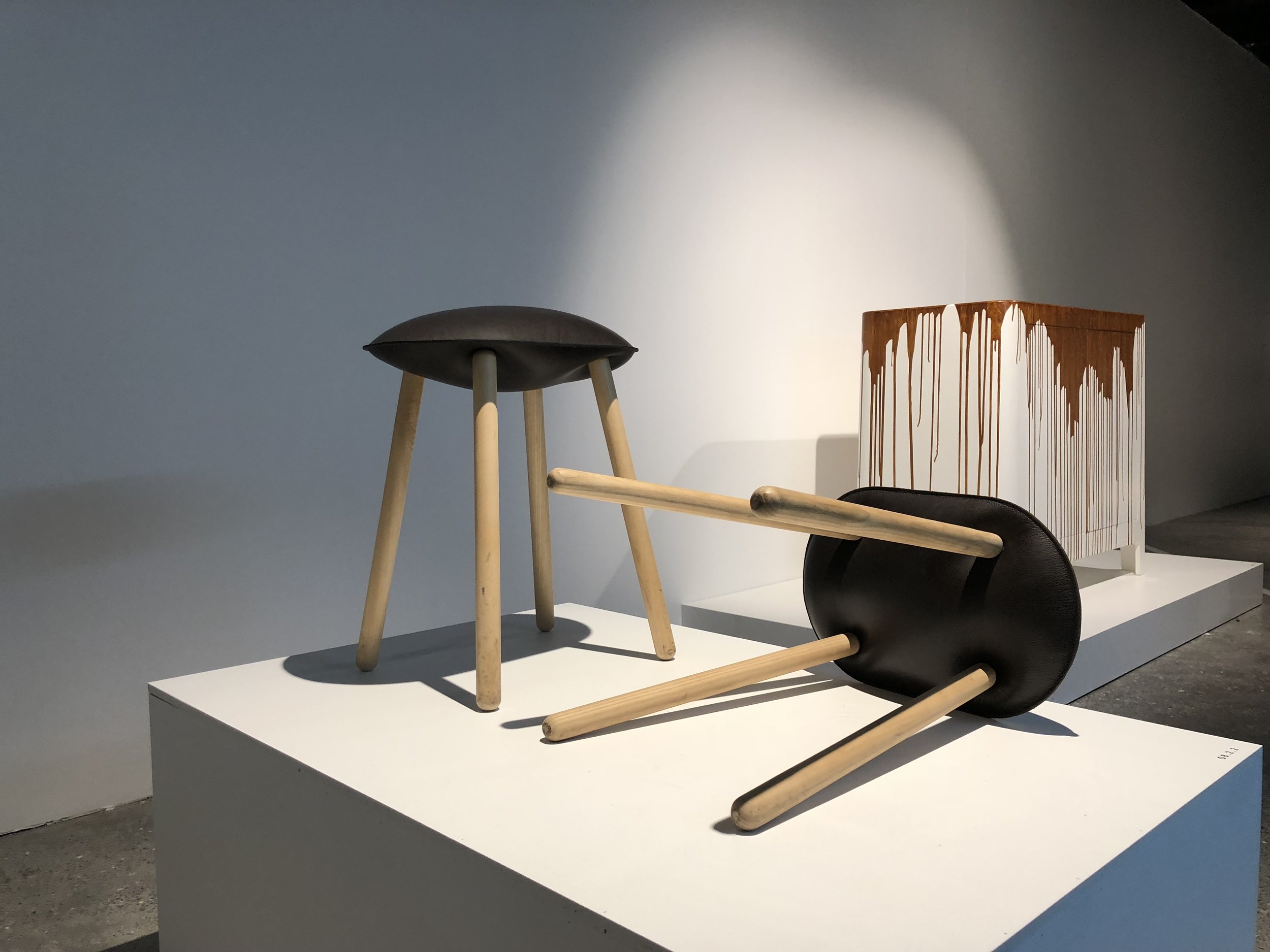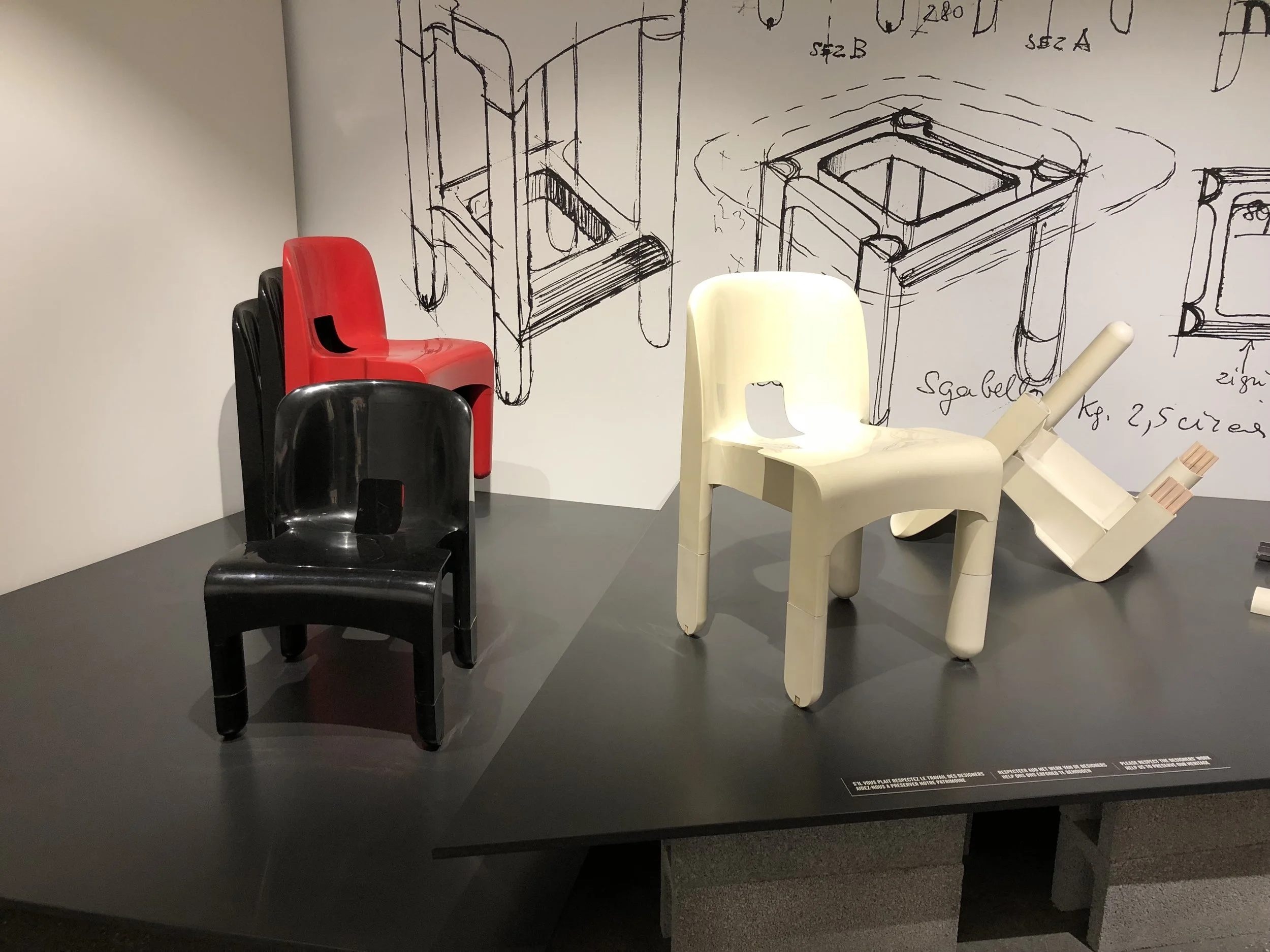The Brussels Design Museum had three exhibits; two rotating, and the Plasticarium, which is their permanent collection.
I didn't pay any attention to the first exhibition, which was on graphics from the 1958 Brussels World fair.
The other temporary exhibition was called Design Generations (Intersections 5), and consisted of ten different installations by ten different Belgian design firms. Each defined their concept of design, and exemplified it through objects that of the past, present, and future. The past was represented with an object chosen from the museum’s permanent collection, while one of several objects from the designers’ own collections were chosen to represent the present, and an imaginary object not yet created represented the future, which could be viewed by looking through at special magnifying glass at an a small LCD screen depicting an illustration of the imaginary object.
My favorite submissions was Kaspar Hamacher.
-Kaspar Hamacher
Past - Adjustable-flame BIC lighter (1973)
“The individual who first lit a fire marked the beginning of humanity”
Present - Ausgebrannt (German: burnt-out/burned-out) (2010-2017)
Two stools/side tables and bench created by sawing the basic shape from a section of tree trunk, which was then charred-through.
Future -
For his "Future" object, Hamacher conceived of desks made of logs, left in their natural form. The natural texture of the log was intentionally retained, as texture is one of the aspects of design that is most closely linked to emotion.
The reason I chose Hamacher’s submission as my favorite is because he had the best continuity across the past, present, and future objects, with the fire motif. I also thought his current work was creative and original.
Other submissions consted of objects ranging from greeting cards, to household goods. There was also a good bit of furniture.
The 'Yale' sofa (2016), designed by Sylvian Willenz, deriving its name from its Y-shaped legs.
The 'Profile' collection (2016), also by Sylvian Willenz.
'Deskmate' (2008) Alain Berteau
Designed to improve working space by introducing color, improved acoustics and privacy. Made from honeycomb cardboard panels and biodegradable fabric made from wool and nettle fibers, this eco-friendly solution takes only seconds to set up.
'Fabric chair' (2016) Alain Berteau
This monobloc chair was designed to be both as comfortable and eco-friendly as possible. Made without glue or foam, its back and seat are a single piece constructed with the most up-to-date developments in digital knitting techniques, using heat-shrinkable, recyclable polyester fibers
'Textured Cabinet' (2013) Damian Gernay
Made in a neutral white material, the oak grain texture is projected on to the cabinet and then painted on by hand.
'Bloated Stool' (2013) Damian Gernay
Made by filling sheets of leather with expanding foam
'BuzziFLOAT' (2017) Alain Gilles
Two U-shaped elements form the backrest and seat of this chair, the latter of which appears to float, due to the gap between the seat and supporting structure. This piece embodies the designer's concept of "New Simplicity", which involves creating complexity from a small amount of material.
This submission also resonated with me because the designer, like me, initially had a career in Finance.
The Plasticarium began with a private collection of plastic artifacts that was donated the museum. This collection has been supplemented with additional items on loan from public collections, galleries, and collectors. It includes everything from tableware to the original iMac, and of course, plenty of plastic furniture.
The exhibit chronicles how plastic, as a material, disrupted design. And how its versatility and aptness for mass production corresponded with the social movements that coincided with it's widespread adoption.
Plastic became popular right after WWII, when much of Western society was on a shopping spree. Household formation sharply increased, there was pent up demand for household goods, and a prolonged period of economic expansion was taking place. Simultaneously, a new emphasis on affordability was being made in order to bring a feeling of upward social mobility to the masses, and prevent the type of atmosphere that might lead to a proletarian revolt. New and more visually oriented mediums for advertising, such as the television also were becoming more prevalent, which helped foster a culture of consumerism. Plastic, still a relatively new material, was well suited for this dynamic, since it was cheap, light enough to be shipped at low cost, and could be used to produce goods on a massive scale. Furthermore, it could be made in virtually any color and shape, especially those which are bold and extravagant, which made it conducive to the period’s emphasis on a less formal and leisure-centric lifestyle.
the 'Universal' chair, designed by Joe C. Columbo (1965), and produced by Kartell beginning in 1967, was the first chair made entirely of plastic, using the injection-mould process. This chair exemplifies everything that the material did for furniture design. Not only was it inexpensive and light, allowing it to be mass produced and shipped efficiently, but it could also could be adapted for individual users since it was available in a variety of colors and featured interchangeable bases. In fact, this versatility is the basis for which it got its name.
Kartell is still producing plastic furniture to this day. Pictured below, the 'Ghost' collection, designed by Phillippe Starck (2002) illustrates how a material that was initially meant to be cheap and affordable can also become a luxury, selling for several hundred dollars per piece.
The Navy chair (1944) was originally designed in aluminum (left) for use on submarines. In 2006 furniture manufacturer Emeco teamed up with Coca-cola, who was looking for uses for recycled plastic to keep their bottles out of land fills. Together they developed a recycled material with properties suitable for recreating the chair out of a new, recycled material (right).
The ‘Masters’ chair (2010), designed by Phillip Stark and Eugenie Quitllet, gets its odd lines by combining the silhouette of three iconic chair designs of the 20th century: the ‘Eiffel’ chair by Charles and Rae Eames (1948), the ‘Series 7’ chair by Arne Jacobsen (1955), and the ‘Tulip’ armchair by Eero Saarinen (1956).
My favorite non-furniture artifact in the collection was this 1988 Dyson DC05. I've had the same Dyson since I graduated from college 10 years ago, and extolled its virtues ever since I first got it. Long before I ever became concerned with design, I appreciated how well thought out everything about it was, right down to the attachments.























